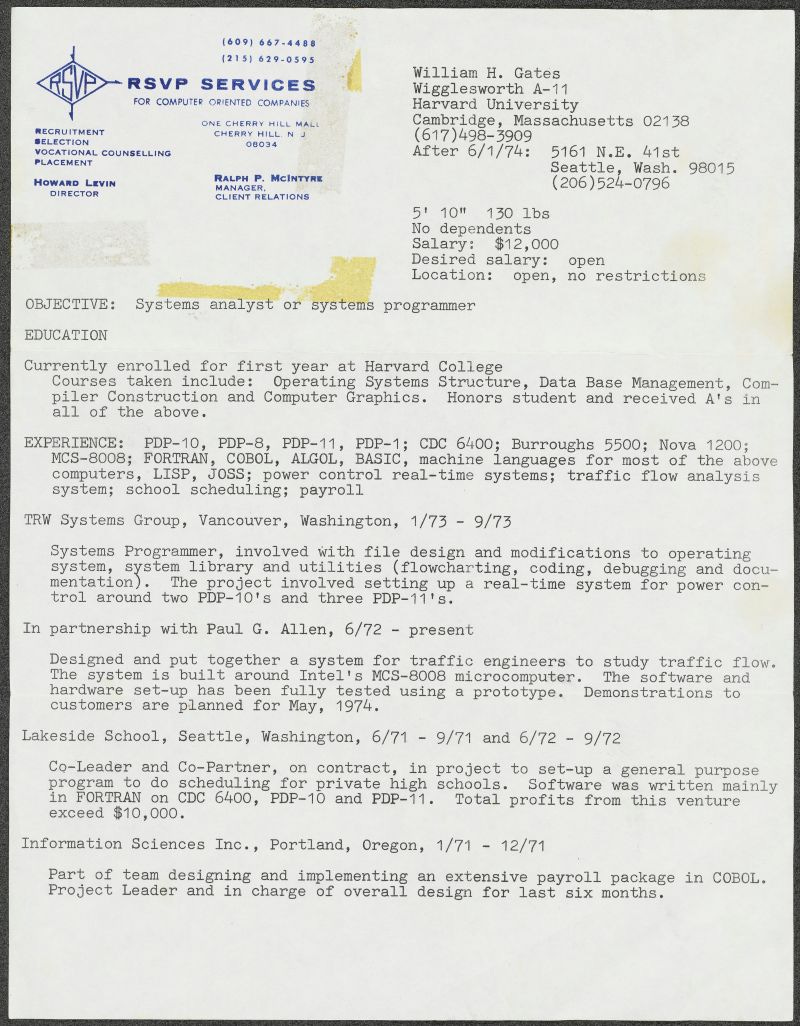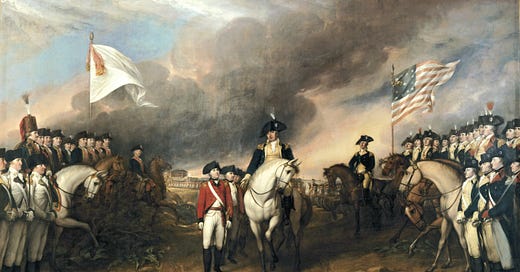

Discover more from American Ambition
Fortune magazine interviewed me on advice for Bill Gates after he shared his resume on LinkedIn:
Fortune Magazine: Bill Gates’ mistakes to avoid
Now the one-time richest man in the world doesn’t need my resume advice any more than Novak Djokovic needs my tennis lessons.
But the lessons to be learned from his 1974 resume are relevant to you today.
By the way, if you need a new resume you can get one written free, tips appreciated, at Leet Resumes.
Here’s what we can learn from old man Gates’ resume from when he was young:
He makes the classic smart person’s mistake of putting facts and figures at the end of the sentence.
Your resume is an advertisement meant to grab a future boss’ attention. It’s much more powerful if you put the numbers up front like this:
Generated $10,000 in profits while still in high school by building a scheduling program for private schools using FORTRAN…
This is effective marketing. It tells the reader right up front why they should be interested and what’s in it for them.
By contrast, the smart person often wants to explain what they did before they get to the punch line:
Co-Leader and Co-Partner, on contract, in project to set-up a general purpose program to do scheduling for private high schools. Software was written mainly in FORTRAN on CDC 6400, PDP-10 and PDP-11. Total profits from this venture exceed $10,000.
You only have 6 seconds to grab a recruiter’s attention during their first review of your resume, according to the famous research we’ve done at Ladders. And so the problem with this cause-effect sentence structure is that it hides your achievement behind many, many lines of text.
It’s much better to get your achievements mentioned first, and then explain how you did it.
Effect first, cause second.
As I mentioned with Fortune, he also put way too much information about himself and his personal details on the resume. There’s no need to include height, weight, dependents, etc.
He overdid it with the contact information, too. Now this is 1974, so it’s before answering machines, voicemail, text, or smartphones, so it’s OK that he put both his school year and home addresses.
He could have taken up less space, though, by putting them both at the top - one to the left, the other to the right. (And, indeed, there are other versions of this resume out there with that format.)
He uses limp language. The verbs and phrases he chose are limp, unimpressive, and weak.
‘Currently enrolled’, ‘involved with’, ‘designed and put together’, ‘on contract… to set up.” None of these phrases cast Bill Gates as the hero of the story. Again, your resume is an advertisement, and you’ve got to make the product the hero.
He should be using strong success verbs instead. ‘Led successful launch’, ‘Crafted and shipped prototype’, ‘Delivered $10,000+ in profits’. Starting his bullet points with stronger, success-driven language stands out when a hiring manager or recruiter is looking through a pile of dozens or hundreds of resumes.
His objective is well-handled for the time. Today, we’d want to get 3 - 4 desired job titles to include on this first line to fill out your professional summary and make best use of the space. But in any event, he is clever to use the job titles he is going for, rather than the job titles he’s had.
And his location section is far ahead of his time - ‘open, no restrictions’ - sounds more in line with our remote-work world of 2022 than the relatively isolated United States of 50 years ago (when the price for an economy flight between Los Angeles and New York was $336, that’s $2,350 inflation-adjusted!)
His education should be handled in a more straightforward way, indicating that he is a candidate for graduation in 1977.
And, finally, it should be noted that the business card taped to the upper left of his resume was a standard practice in recruiting when search consultants mailed resumes to clients. And by mailed, I mean physical, United States Post Office snail mail, not email or text!
I looked up Howard Levin of RSVP Services, and found that he passed away last year. As his obituary states, “Professionally, Howard was an entrepreneur. He built RSVP Services, an employment agency for Computer and Engineering professionals, which he ran for over 40 years.”
I’m sure William H. Gates stood out for him in his long career as a recruiter, and this relic of a different time reminds us of that long journey to success.
Thanks for reading, and if you need a great, professional resume written for free (tips appreciated), head to Leet Resumes.














